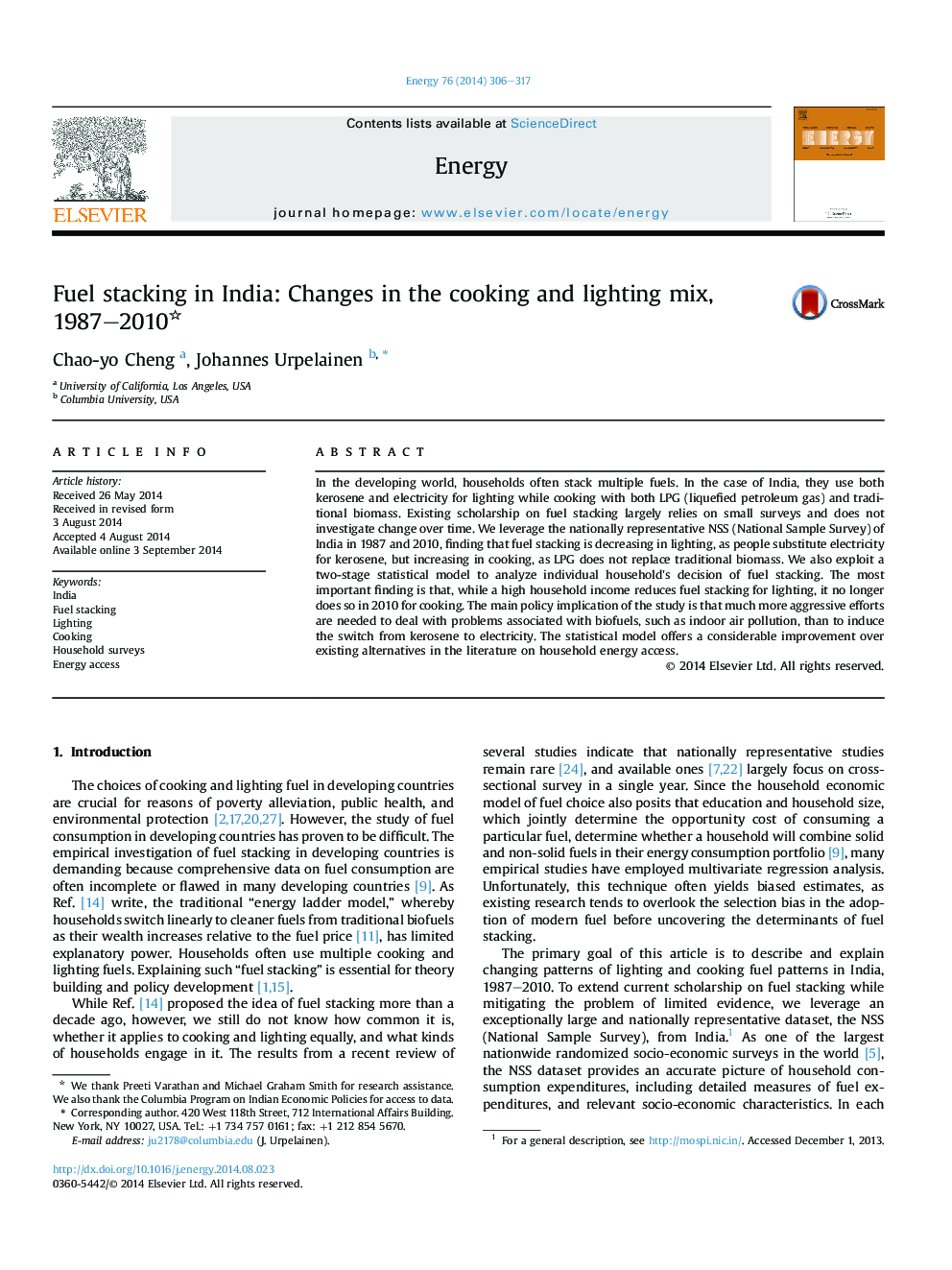| Article ID | Journal | Published Year | Pages | File Type |
|---|---|---|---|---|
| 8076686 | Energy | 2014 | 12 Pages |
Abstract
In the developing world, households often stack multiple fuels. In the case of India, they use both kerosene and electricity for lighting while cooking with both LPG (liquefied petroleum gas) and traditional biomass. Existing scholarship on fuel stacking largely relies on small surveys and does not investigate change over time. We leverage the nationally representative NSS (National Sample Survey) of India in 1987 and 2010, finding that fuel stacking is decreasing in lighting, as people substitute electricity for kerosene, but increasing in cooking, as LPG does not replace traditional biomass. We also exploit a two-stage statistical model to analyze individual household's decision of fuel stacking. The most important finding is that, while a high household income reduces fuel stacking for lighting, it no longer does so in 2010 for cooking. The main policy implication of the study is that much more aggressive efforts are needed to deal with problems associated with biofuels, such as indoor air pollution, than to induce the switch from kerosene to electricity. The statistical model offers a considerable improvement over existing alternatives in the literature on household energy access.
Related Topics
Physical Sciences and Engineering
Energy
Energy (General)
Authors
Chao-yo Cheng, Johannes Urpelainen,
